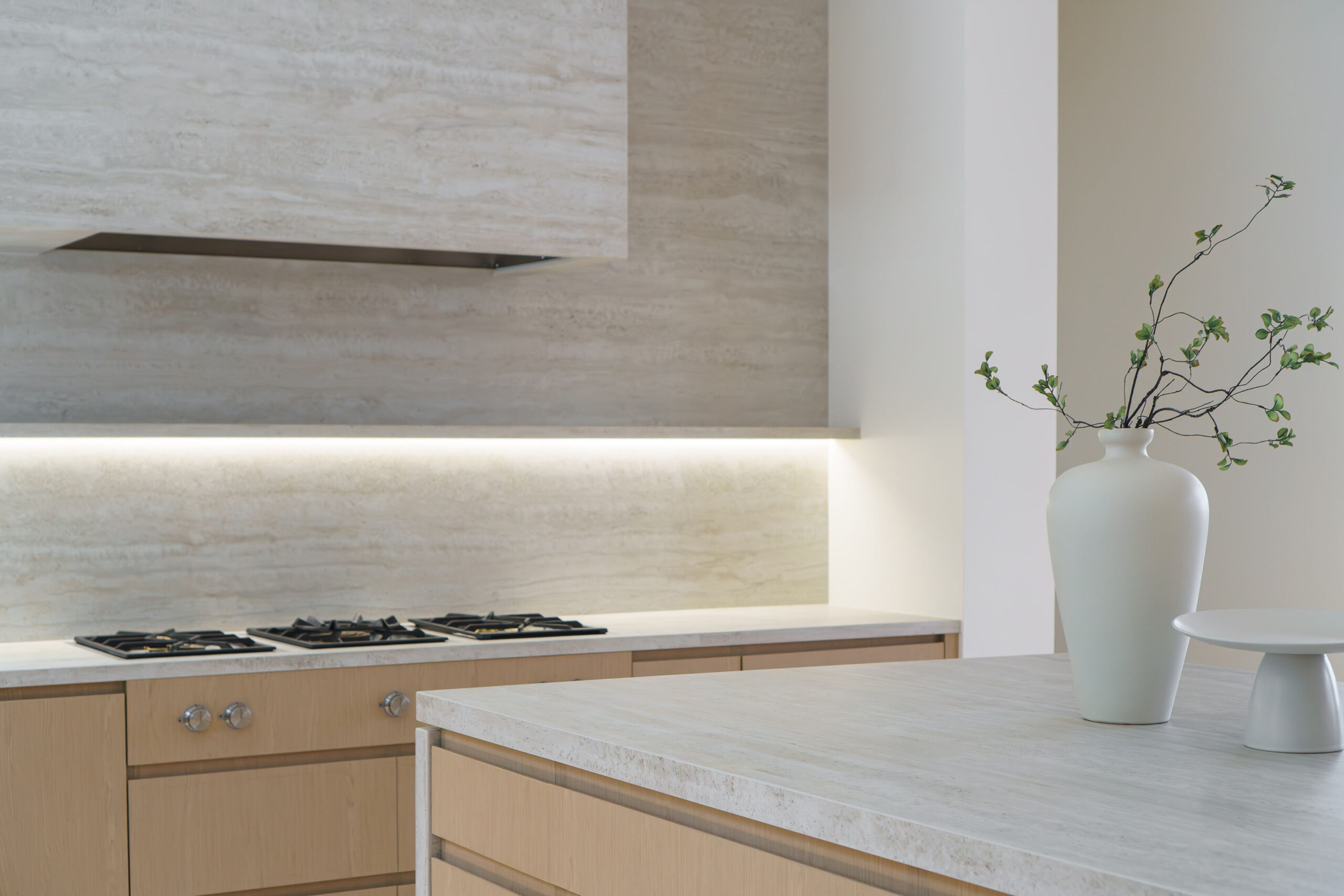Blog
Easy Care Tips

Caring for natural stone is easy—just a handful of everyday habits will keep your countertops, floors, and outdoor features looking as stunning as the day they were installed. The simple guidelines below, shared by the Natural Stone Institute, will help you protect and enjoy your stone for years to come.
QUICK TIPS:
- Coasters: Always set drinks on coasters, especially those with alcohol or citrus.
- Trivets: Stone tolerates heat, but it’s safer to place hot pans on trivets or mats.
- Spills: Blot spills right away with a paper towel—don’t wipe or you’ll spread them. Rinse with mild soap and water, then dry with a soft cloth. Repeat as needed.
CLEANING
- Wash stone with a pH-neutral cleaner, stone soap, or mild dish soap and warm water.
- Too much cleaner can leave a dull film or streaks—follow the label directions.
- Use a soft cloth or sponge.
- Rinse well and dry with a soft cloth, changing rinse water often.
- In showers, run a squeegee after use to cut soap scum. For buildup, use a non-acid soap-scum remover or ½ cup ammonia in a gallon of water. Overusing ammonia can dull some stones.
- Outside (patios, pools, hot tubs), hose off and, if needed, use a mild bleach mix to remove algae or moss.
CLEANING PRODUCTS
- Many brands make stone-safe cleaners.
- Avoid products with lemon, vinegar, or other acids—these can etch softer stones.
- Skip scouring powders/creams; abrasives can scratch.
- Rust removers (laundry, toilet) often contain hydrofluoric acid, which damages all stone.
- Never mix ammonia and bleach—this creates a poisonous gas.
SEALING
Sealers (technically “impregnators”) help repel stains; they don’t make stone stain-proof. Some stones don’t need sealing—ask your supplier. If you do seal:
- Remember it only boosts stain resistance.
- Use food-safe, non-toxic sealers on counters.
- Follow the maker’s instructions for how often to reseal.
STAIN IDENTIFICATION TIPS
Knowing the stain type tells you how to remove it. Think about:
- Location: Near plants, food prep, cosmetics?
- Color / shape: What does it look like?
- Surroundings: What usually happens there?
STAIN REMOVAL STEPS
Most surface stains lift with the right cleaner or a poultice.
What kind of stain is it?
- OIL-BASED (grease, cosmetics, etc.)
- Darkens the stone. Use liquid detergent, mineral spirits, or acetone to dissolve and rinse.
- ORGANIC (coffee, tea, wine, fruit)
- Pink-brown color. Outside, sun and rain fade it. Inside, clean with 12 % hydrogen peroxide plus a few drops of ammonia.
- METAL (rust, copper, bronze)
- Rust is orange-brown; copper/bronze is green-brown. Remove with a poultice (see Natural Stone Institute site). Deep rust may be permanent.
- BIOLOGICAL (algae, mildew, moss)
- Clean with ½ cup ammonia, bleach, or hydrogen peroxide in a gallon of water. Do not mix bleach and ammonia.
- INK
- Light stone: bleach or hydrogen peroxide.
- Dark stone: lacquer thinner or acetone.
- PAINT
- Small spots: lacquer thinner or a razor blade.
- Heavy paint: use a commercial paint stripper (lye-based). Follow directions, rinse well, wear gloves/eye protection, and only use wood/plastic scrapers. Acid or flame tools will damage stone. Oil-based paints can leave oily stains—treat as oil-based.
- WATER SPOTS / RINGS
- Buff gently with dry steel wool (#0000).
- FIRE / SMOKE DAMAGE
- Use commercial smoke removers; etching may need professional repolishing.
- ETCH MARKS
- Caused by acid contact. May need a pro to refinish the surface.
- EFFLORESCENCE
- White powder from salts in water. Dry mop or vacuum repeatedly; avoid wet cleaning. If it keeps coming back, find and fix the moisture source.
- SCRATCHES / NICKS
- Light scratches: buff with dry steel wool. Deep ones need professional repair and repolishing.
USING A POULTICE
For full instructions, visit naturalstoneinstitute.org/consumers/care/ or call a stone professional.
NATURAL STONE IS EASY TO CARE FOR!
If a problem seems tough, contact your stone supplier, installer, or a restoration specialist.